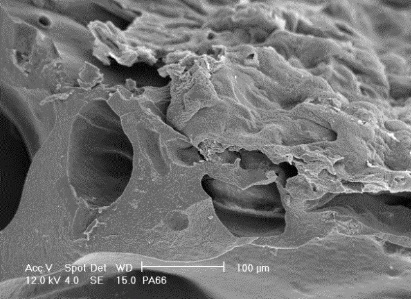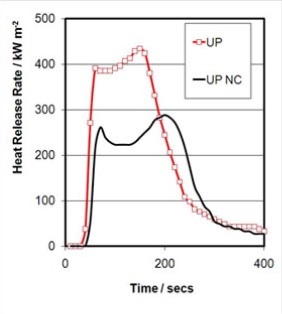Fire retardant clay-polymer nanocomposites - SUREFIRE
The SUREFIRE project was undertaken to develop a brand-new class of materials that provide strength, stiffness, hardness and fire performance properties to compete with conventional materials such as steel or concrete, whilst giving additional capability in areas such as lightweight, corrosion resistance and design freedom. The aim was to achieve this through the synergistic integration of both nano size (particulate) and micro size (fibrous) reinforcements within a polymer matrix.
The project was split into seven complimentary tasks. MERI was deeply involved in Task 1 in which a range of commercial nanoclays were sourced and characterised. Subsequently, new organoclays were developed to improve their fire performance and compatibility with the resin. The optimised clay-resin systems readily passed the UL94 test at V-0 level. These observations were confirmed with glass-fibre filled samples using cone calorimetry (Figure 2).

Figure 1. Scanning electron micrograph illustrating the formation of a clay-carbon char on the surface of a polymer.

Figure 2. Reduction of peak heat release rate upon addition of nancolay (NC) to the unsaturated polyester (UP)
